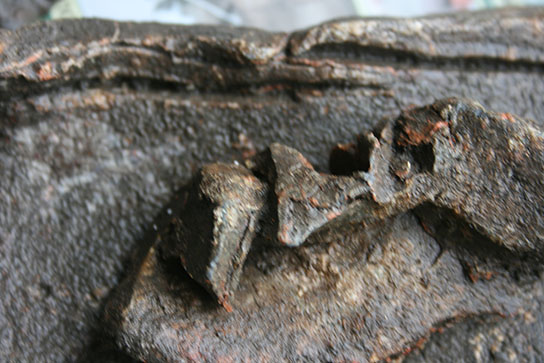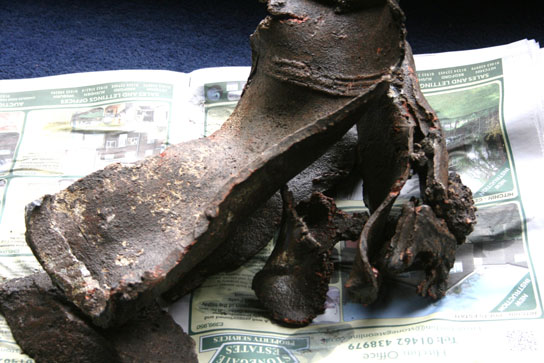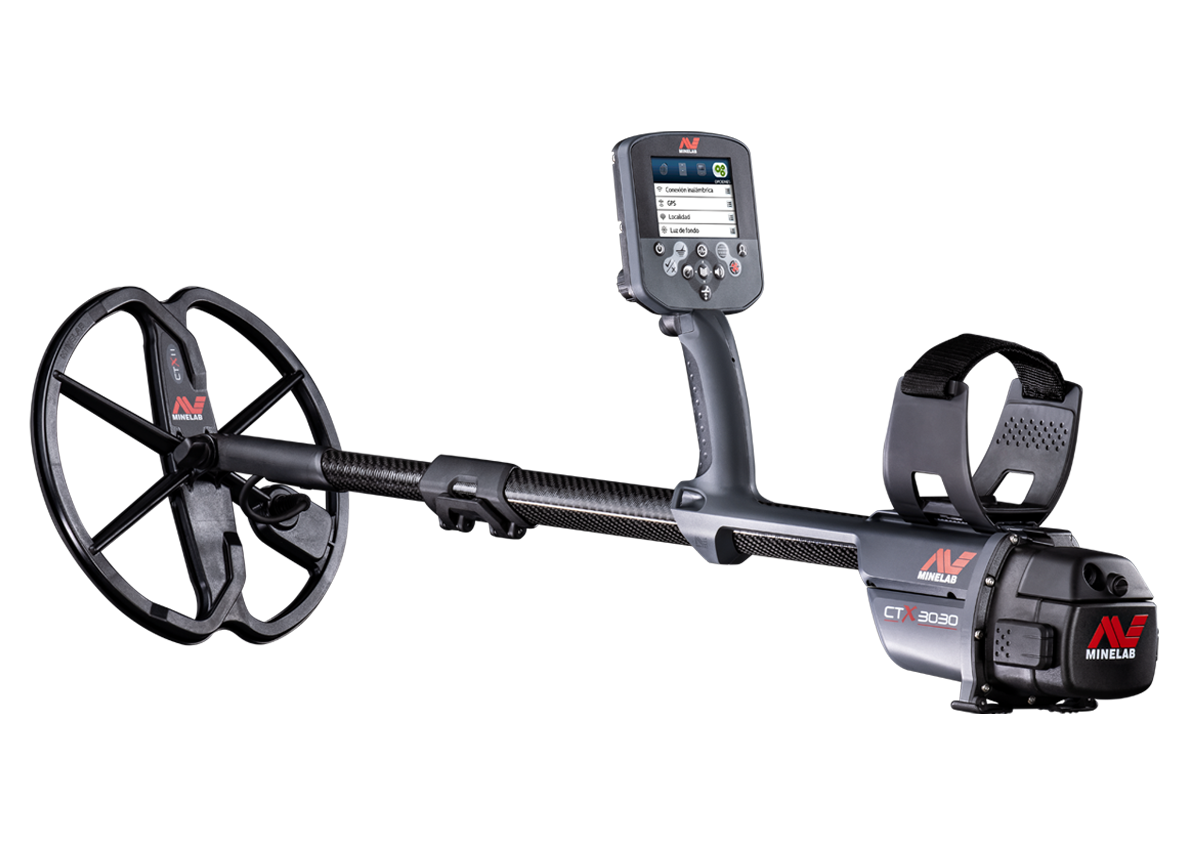For me no more important example of just how superb this FindPoint facility is can be given by a recent series of finds that I made. Whilst searching a Roman site that had been much deeper ploughed this year I found a sheet of lead about 8 inches long and 9mm thick, that had been folded. This find was virtually on the surface and obviously gave a really prominent signal. Just a piece of lead? I didn’t think so; previously I had located a few pieces here before but nothing as big as this.
 Showing the violent large hack marks made upon the surface, whoever did this did so about 1600 years ago, but just look how sharp and clear they are.
Showing the violent large hack marks made upon the surface, whoever did this did so about 1600 years ago, but just look how sharp and clear they are.
It had clearly been roughly hacked apart perhaps by a chisel, and perhaps an axe. It was evident that a lot of time and effort had been taken to dismantle something. One section shows that a chisel like object has been used to create perforations in the side, and then a blade had been used to cut down these weakened lines. Then I recalled something from deep in my memory, about a certain type of Roman artefact that often experienced such brutal attentions. So I began searching slowly plotting all the signals on FindPoint and in an area a few metres across I had a really large signal with some surrounding smaller ones.
.jpg)
I dug out the smaller targets first which ranged from a few inches down to about 14 inches. Then I concentrated on the larger signal and at a depth of 1.5 feet still had no evidence of what it could be. Then at about 2 feet down I saw the telltale corrosion deposits of lead. Carefully excavating I could see that there was a pile of lead sheets, so I enlarged the hole and worked around them. When I had carefully removed them I re checked the hole, but no further signals were obtained.
One of the lead sections had a square cut over lip and what appeared to be some decoration on it. I also noted the unusual sandy brown corrosion deposits and another brick-red and even mauve coloured corrosion. Further examination proved my memory to be correct here before me lay the hacked and mutilated remains of a Roman lead tank.
 The lead sheets stacked up as they were buried and found
The lead sheets stacked up as they were buried and found
There are only some twenty complete examples and a few stray fragments of these artefacts in the UK. They are strangely enough only found in the UK part of the Roman Empire.
Due to religious based motifs incorporated on to these items mostly Christian crosses, Chi Rho`s and Alpha and Omega signs they are believed to be early Christian baptismal fonts, or tanks for washing the feet prior to the ceremony. Often they are found in watery deposits or in deep pits and are interpreted as being evidence of the earliest Christians in Britain.
In part 2 of this blog post I’ll explain how I cleaned my find and will be using XChange 2 to dig deeper into this mystery.
Julian Evan-Hart





















Comments